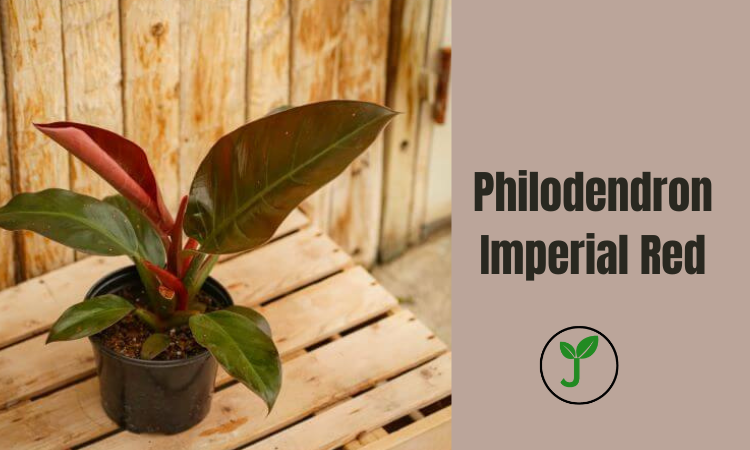Growing houseplants is a passion for many, and the Philodendron Imperial Red is one of the most popular choices for indoor plant enthusiasts in the United States. With its striking red and green foliage, this plant adds a touch of elegance to any space. In this comprehensive guide, we’ll dive into everything you need to know about Philodendron Imperial Red, including its care, benefits, and more. Plus, check out our selection of plant pots, pruning shears, and fertilizers at RealJef Shop to keep your plants thriving.
What is Philodendron Imperial Red?
Philodendron Imperial Red is a hybrid variety known for its large, glossy leaves that start as a deep burgundy-red and mature to a rich green. This tropical plant is not only visually appealing but also easy to care for, making it a favorite among both novice and experienced plant lovers.
Plant Care Guide
| Care Aspect | Details |
|---|---|
| Light | Bright, indirect light |
| Watering | Keep soil moist but not soggy |
| Humidity | High humidity preferred |
| Temperature | 65-80°F (18-27°C) |
| Soil | Well-draining, rich in organic matter |
| Fertilizing | Monthly during growing season |
| Pruning | Remove dead or yellowing leaves |
| Repotting | Every 2-3 years or when root-bound |
Origin and History
The Philodendron Imperial Red is a hybrid developed by crossing different species of the Philodendron genus. Originally, Philodendrons are native to the tropical regions of Central and South America. The hybrid variety was created to enhance the aesthetic appeal and improve the durability of the plant.
Common Name
Commonly referred to as Philodendron Imperial Red, this plant is often simply called “Imperial Red” among plant enthusiasts.
Scientific Name
The scientific name for this plant is Philodendron erubescens ‘Imperial Red.
Benefits
- Air Purification: Like many Philodendrons, the Imperial Red helps to purify indoor air by removing toxins.
- Aesthetic Appeal: Its vibrant foliage adds a decorative touch to homes and offices.
- Low Maintenance: This plant is easy to care for, making it ideal for busy individuals or those new to plant care.
Appearance and Characteristics
Philodendron Imperial Red features large, glossy leaves that emerge in a striking burgundy-red color and gradually transition to deep green. The plant has a compact growth habit, making it suitable for small spaces.
Unique Features
- Color Change: The leaves’ color transformation from red to green is a unique and attractive feature.
- Air Roots: Philodendron Imperial Red develops air roots, which help it absorb moisture and nutrients from the air.
Caring and Growing Guide

Light Requirements
Philodendron Imperial Red thrives in bright, indirect light. Too much direct sunlight can scorch the leaves, while too little light can slow growth and dull the leaf color.
Watering Needs
Keep the soil consistently moist but not waterlogged. Overwatering can lead to root rot, so ensure the pot has good drainage.
Humidity and Temperature
High humidity is preferred, with ideal temperatures between 65-80°F (18-27°C). You can increase humidity by misting the plant or using a humidifier.
Soil and Fertilizing
Use a well-draining potting mix rich in organic matter. Fertilize monthly during the growing season (spring and summer) with a balanced liquid fertilizer.
Propagation Guide
Propagation of Philodendron Imperial Red is typically done through stem cuttings. Here’s how you can do it:
- Cut a Healthy Stem: Select a healthy stem with at least one leaf and a few nodes.
- Prepare the Cutting: Cut below a node and remove the lower leaves.
- Rooting: Place the cutting in water or moist soil. Ensure it’s kept in a warm, humid environment.
- Transplant: Once roots develop, transplant the cutting into a pot with well-draining soil.
Pruning Guide
Regular pruning helps maintain the shape and health of your Philodendron Imperial Red. Remove any dead, yellowing, or damaged leaves. Pruning can also encourage new growth and keep the plant compact.
Repotting Guide
Repot your Philodendron Imperial Red every 2-3 years or when it becomes root-bound. Choose a pot that is 1-2 inches larger in diameter than the current one. Use fresh potting mix to provide the plant with new nutrients.
Common Pests and Diseases
Philodendron Imperial Red is relatively pest-resistant, but it can occasionally be affected by pests like spider mites, aphids, and mealybugs. Regularly inspect your plant and treat any infestations promptly with insecticidal soap or neem oil.
Comparison with Other Species and Varieties
Philodendron Imperial Red is often compared to other Philodendron varieties like Philodendron Congo Rojo and Philodendron Prince of Orange. While they share similar care requirements, the Imperial Red is distinct for its striking leaf color and compact growth habit.
FAQs
What kind of light does Philodendron Imperial Red need?
Philodendron Imperial Red prefers bright, indirect light. Direct sunlight can cause leaf burn, while low light can slow growth.
How often should I water my Philodendron Imperial Red?
Keep the soil consistently moist but not waterlogged. Water when the top inch of soil feels dry.
Can I propagate Philodendron Imperial Red in water?
Yes, you can propagate it in water. Place the cutting in water until roots develop, then transplant it into soil.
What should I do if my Philodendron Imperial Red’s leaves turn yellow?
Yellow leaves can be a sign of overwatering or underwatering. Check the soil moisture and adjust your watering schedule accordingly.
How do I increase humidity for my Philodendron Imperial Red?
Increase humidity by misting the plant regularly, using a humidifier, or placing a tray of water near the plant.
When should I repot my Philodendron Imperial Red?
Repot every 2-3 years or when the plant becomes root-bound. Choose a pot 1-2 inches larger in diameter than the current one.
Conclusion
Philodendron Imperial Red is a beautiful and easy-to-care-for houseplant that can enhance any indoor space. Whether you’re a seasoned plant enthusiast or just starting, this plant is a great addition to your collection. For all your plant care needs, from pots to fertilizers, visit our RealJef Shop.